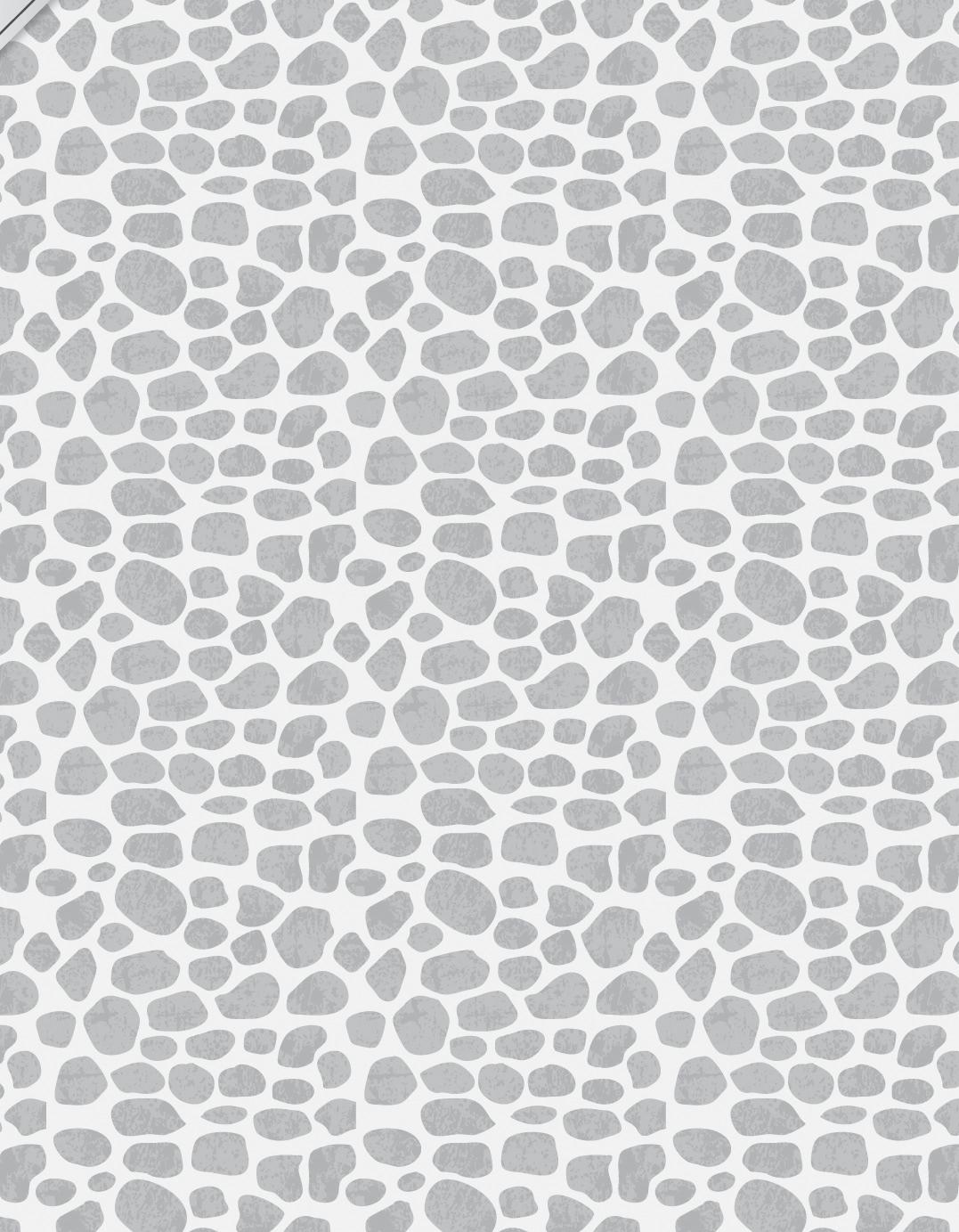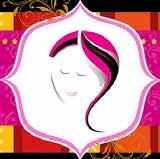





(ISDMT) is a premier institution dedicated to preserving and promoting the rich visual, literary, and performing arts of India in Canada. Based in Winnipeg, Manitoba, ISDMT offers after-school programs that provide rigorous training in classical Indian arts while also catering to a broader audience through its recreational streams. These include Folk Dances, Devotional Music, Bollywood Dance, Yoga, and Theatre—allowing students to explore performances relevant to their age, experiences, and contemporary times.
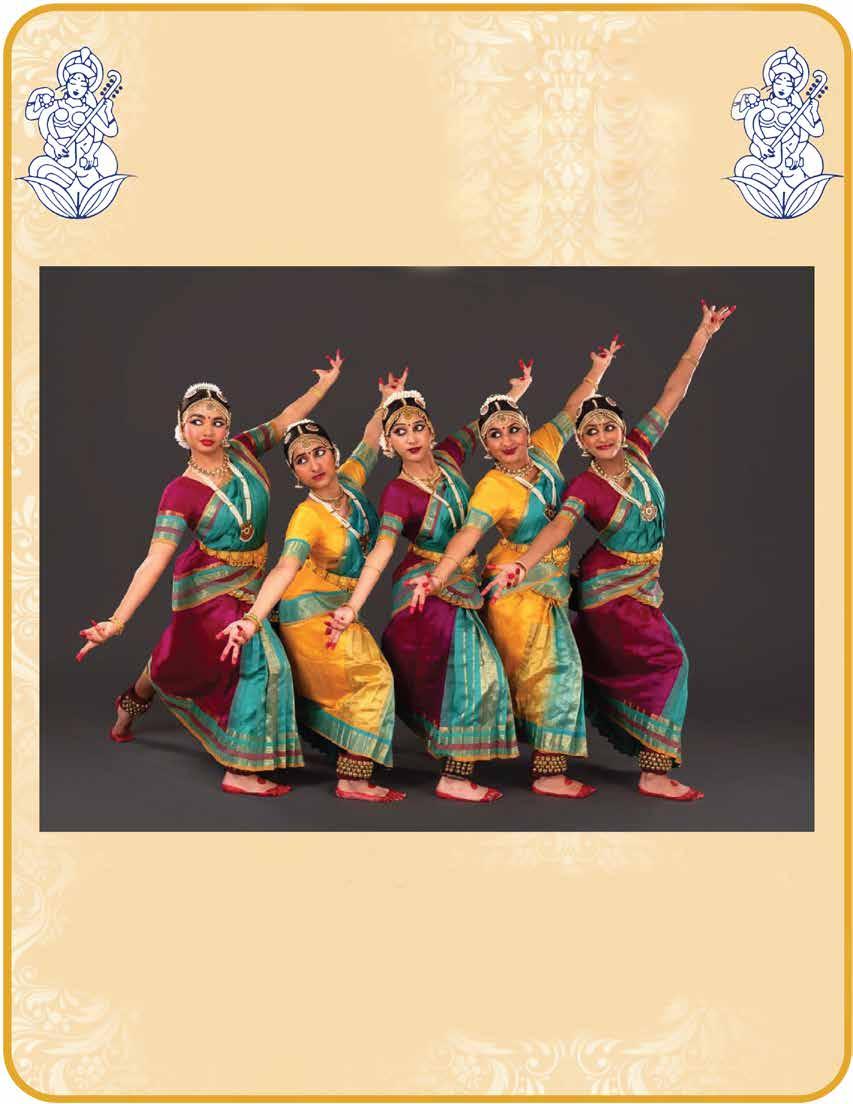
As a multidisciplinary arts institution that unites dance, music, and theatre under one umbrella, ISDMT is a unique entity in Canada and North America. The school takes pride in its esteemed faculty, which includes Gurus and instructors from across Canada, as well as internationally recognized artists from India and beyond. Their expertise, artistic vision, and commitment to excellence shine through in ISDMT’s recitals and showcases, where local talent blends seamlessly with world-class instruction.
www.indiaschool.ca
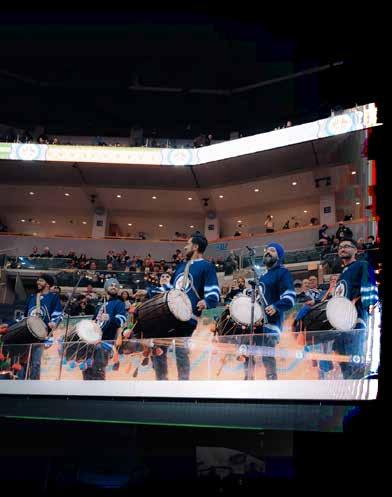

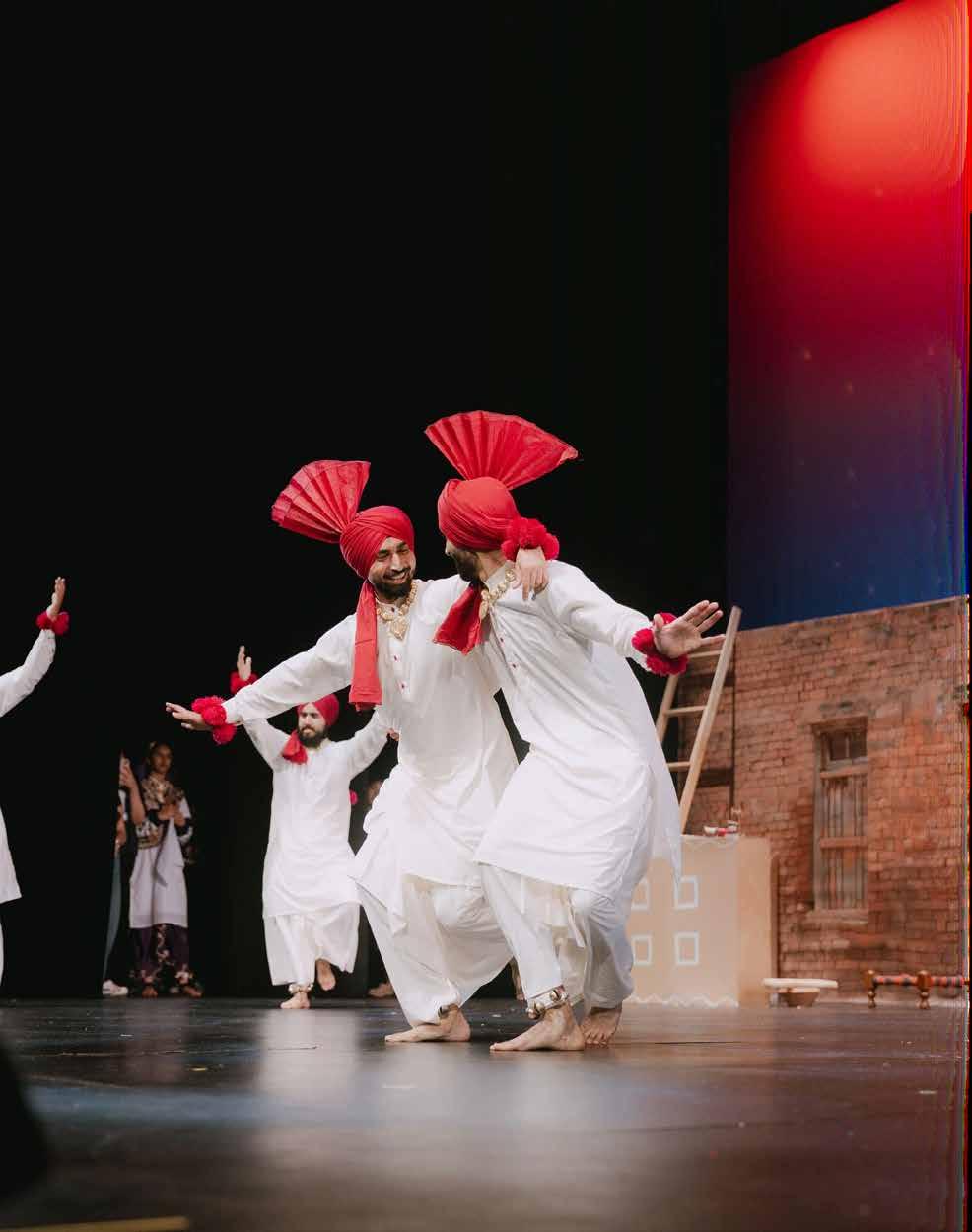

is a unique book that helps children address bullying and overcoming fear by believing in themselves.

Sometimes, the most fascinating part of a book is the story behind it. For me, this book is deeply personal—an account of my own healing journey behind the scenes. It’s not just a story for children, but a reflection of my experiences and the resilience I discovered along the way. This book has been a lifelong dream. Ever since I was a young girl, I promised myself that one day I would write it. What I didn’t anticipate, however, was that when the time finally came, I would face an unexpected challenge—a mild traumatic brain injury left me unable to read or write. What makes this book so special is its message—it’s more than a story. It teaches children about self-love, selfawareness, and cultivating the courage from within. By helping children understand their worth and strength, this book offers tools to combat bullying and build confidence. These lessons are not just for the playground but for life.
Through storytelling, I found a way forward. Even though I struggled to read and write, I leaned on the fact that our brains are natural storytelling machines. Storytelling is not only medicinal, but it is also profoundly healing for mental health. It gave me the strength to endure one of the most difficult times in my life.
Storytelling helped me process my emotions, reduce feelings of isolation, and create a sense of purpose and meaning in my journey. It allowed me to reframe my struggles, giving me a sense of control over my narrative and enabling me to see myself as resilient instead of broken. This act of sharing and reshaping my story became a key part of my healing process.
My memory became my greatest ally. Despite my limitations, I used it to piece together my ideas and, over time, I gained the skills to read and write again. I transitioned from editing in my mind to editing on paper, a process that felt transformative.
Storytelling is a beautiful way to reclaim and rearrange the narrative you’re in and change the outcome of your experience.
Storytelling also illustrated to me the power of creativity and healing.



Mamta is so excited for her first day of grade three! But when her classmates start to whisper and laugh in the line for recess, Mamta wonders if she’ll ever fit in. With some help from her Ma, Mamta learns to celebrate who she is in a confident and sparkling way. As Mamta encourages her classmates to shine bright and share their differences, she gains self-confidence and makes a new and unexpected friend. The book is available on: www.pujatheauthor.ca Amazon www.indigo.ca
Puja Suri is a Canadian Certified Counselor, Mind and Body Coach and Children’s Yoga Instructor. She has a passion for inclusion and has spent many years advocating for people with disabilities. In 2016, she was awarded the Certificate of Appreciation by Vantage for her valuable contributions within her community. Puja is the founder of Seva Girl, a fundraising-based initiative that supports organizations that educate and empower women and children. Her love for self-acceptance is incorporated in Mamta’s Lovely Mustache, which is based on her life, but with a fun twist.


It is with great pleasure that we present this latest issue of the Manitoba South Asian Health Magazine, dedicated to celebrating health, wellness, and community within the vibrant South Asian population of Winnipeg. The city continues to grow as a hub for culture, connection, and opportunity, and we are proud to highlight inspiring individuals and organizations that are making a lasting difference in the lives of our community members. Through this issue, we aim to provide resources, insights, and stories that encourage healthy living, personal growth, and a deeper sense of togetherness. Our cover story features the incredible Asian Women of Winnipeg (AWOW), an organization that has been a pillar of empowerment, advocacy, and support for women in our community. With a 6-page feature inside, we explore their mission to create safe, inclusive spaces where Asian women can thrive personally and professionally. AWOW’s work spans mentorship programs, networking opportunities, cultural celebrations, and initiatives that uplift voices often left unheard. This feature is both a celebration of their achievements and a reminder of the strength and resilience of women working together for a brighter future.
We are also proud to highlight Hardeep Kaur Singh from Mind, Body & Soul Holistic Healing, whose dedication to mental, emotional, and spiritual wellness has touched countless lives. Hardeep’s approach combines traditional healing wisdom with modern holistic practices, offering her clients a balanced and compassionate path toward inner peace and wellbeing. In her profile, she shares her journey, her philosophy on healing, and how she continues to inspire those seeking a healthier, more mindful lifestyle.
Another remarkable feature in this issue is Dr. Romie Dhaliwal from Academy Optical, a respected professional committed to improving eye health within our community. Dr. Dhaliwal’s expertise and personalized care have made her a trusted name in Manitoba’s optical health scene. She speaks about the importance of regular eye examinations, the connection between vision and overall health, and her passion for educating the community on preventive eye care. Her story is a testament to the role that dedicated healthcare professionals play in ensuring our well-being.
As you explore this edition, we hope you find inspiration in these stories and the people behind them. Our wish for all our Manitoba readers is continued good health, happiness, and prosperity. Together, let us celebrate our achievements, support one another, and embrace a future filled with wellness and unity. Thank you for being part of our growing community and for allowing us to share these important voices with you.
Cheers to Good Health!










The Getting Healthy Guide provides a personalized checklist to help prevent disease and live a healthier, longer life. Just enter your age and gender to get health advice specifically tailored to you.
Guide results are packed with tips from Manitoba’s expert doctors, including everything from immunizations and medical screenings, to regular check-ups, to health concerns or risks you may want to discuss with your doctor.
GettingHealthy.ca also features regular articles by physicians about a variety of topics related to health and well-being. Articles are shared on social media and in a regular newsletter.
Join thousands of Manitobans who have accessed their personalized Getting Healthy Guide.




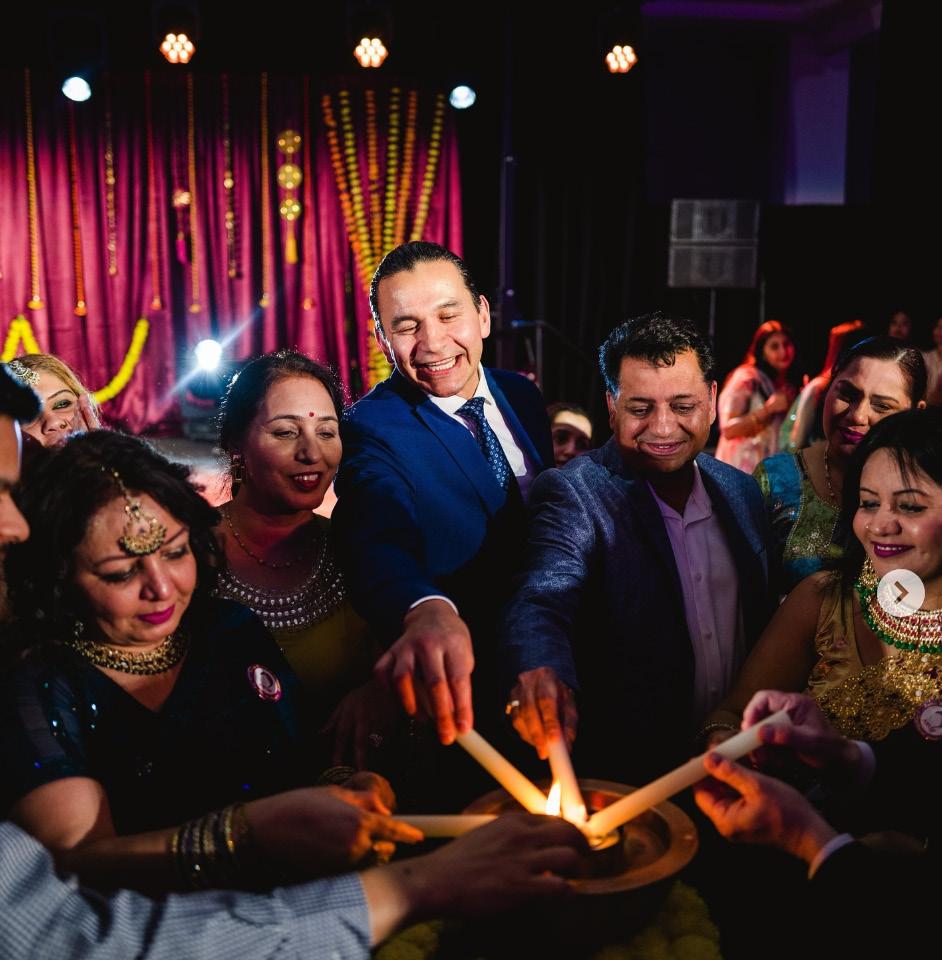
Can you tell us about the founding of Asian Women of Winnipeg and the mission behind it? What inspired its creation?
Asian Women of Winnipeg (AWOW) was founded with a mission to empower Asian women by providing a platform for leadership, cultural connection and advocacy. The inspiration came from recognizing the need for a community where Asian women could connect, share experiences and support one another in overcoming challenges unique to their identity. The organization’s roots lie in a belief in the power of community and the importance of fostering resilience and confidence in women, enabling them to make meaningful contributions to society.

Sharan Tappia (Founder & President of AWOW)
2 3
What are the core values and goals that drive AWOW's work in the community, and how have these evolved over time?
“AWOW’s core values are that we believe in Mutual Respect, Diversity and Equality” Over time, these values have evolved to address the changing needs of the community, incorporating a stronger focus on youth engagement, recognition of accomplished Asian women in Manitoba, mental health awareness and crosscultural collaboration. The organization aims to amplify the voices of Asian women, foster leadership and ensure a sense of belonging in Winnipeg’s diverse cultural landscape.
How does AWOW define "empowerment" for Asian women in Winnipeg, and what specific programs or initiatives do you offer to support this?
Empowerment for AWOW means creating opportunities for Asian women to thrive socially, professionally and culturally. AWOW achieves this through mentorship programs, leadership workshops, cultural events and advocacy campaigns. For example, the organisation started with hosting Mother’s Day celebration, after one year we decided to host, “International Women Day” celebration where we started recognising outstanding achievements of women of Asian origin annually. This year we are celebrating our 10th celebration of this day. The number of nominations we have been receiving is tremendous. Later on we decided to host one cultural event called “Lohri Mela” to celebrate birth of baby girls. We did not stop there as we took on another initiative, “Education Series” and focused on women’s physical, mental and spiritual health. Hosting this educational series involved bringing women experts from various fields and providing opportunities for our members and non-members to learn and make better health and life decisions.

How has AWOW impacted the lives of Asian women in Winnipeg? Can you share any personal stories or success stories from participants?
When we first started Lohri Mela, not many families were celebrating the birth of their daughters and now after so many years more families come forward to celebrate the birth of their daughters
AWOW has helped numerous women find their voice, establish careers and build strong community networks. Indeed, I feel that AWOW has inspired, encouraged, motivated and provided the confidence for many women to achieve their potential and attain greater heights as well as to pursue their dreams. When we first started Lohri Mela, not many families were celebrating the birth of their daughters and now after so many years more families come forward to celebrate the birth of their daughters. Similar thing with Int. Day, every year we get so many nominations for outstating women that sometime it takes our award committee two to three hours to choose the awardees. Stories like this highlight the ripple effect of empowerment—when one woman thrives, her success positively impacts her family and the broader community, which in turn inspires others to reach out to the stars.
What are some of the unique challenges faced by Asian women in Winnipeg, and how does AWOW address these challenges?
Asian Women in Winnipeg often face challenges such as cultural barriers, under representation and difficulty accessing resources. AWOW addresses these issues by providing culturally tailored programs, hosting events that celebrate diversity, by networking with other Asian organisations to share and exchange ideas as well as advocating for policies that support equity. By creating safe spaces for dialogue and offering mentorship, AWOW helps women overcome these barriers and achieve their potential. AWOW works diligently to bridge the gap between decision makers and grass roots.
does AWOW
between Asian women and other communities in Winnipeg? What role do you see AWOW playing in promoting cultural inclusivity?
AWOW fosters cross-cultural understanding by organizing events that invite diverse communities to participate, such as the annual Lohri Mela (performs from other cultural organisations participate) and guest at International Women’s Day celebrations comes diverse background and organisations, educational events where we bring speakers from other communities as well. These events celebrate shared values of community and collaboration while showcasing Asian heritage. AWOW hosted a multicultural event, dedicated to MB150 (150 year birthday of Manitoba) where fifteen plus community organisations participated and showcased their culture through traditional dances, cultural displays and food. AWOW is the only organisation which has showcased it’s role in promoting inclusivity lies in being a bridge that connects cultures, encouraging mutual respect and understanding.

What role do leadership and mentorship play within AWOW, and how does the organization support the development of future leaders among Asian women?
Leadership and mentorship are at the heart of AWOW’s mission. AWOW reflects the multigenerational household dynamic where we have our advisory board – to whom we always seek guidance and our youth council where we provide opportunities to our youth so they can dream big without any limitations, develop their public speaking skills, learn to host and deliver successful events by planning and organising.
The organization supports future leaders through structured mentorship programs, networking opportunities, and leadership workshops. By connecting experienced professionals with aspiring leaders, AWOW ensures that knowledge and inspiration are passed down to the next generation. Indeed, our succession planning and generation of future leaders begins with our youth council designed to not only engage youth, but to instill our core values, which we sincerely believe they will carry forward.
AWOW has been a powerful voice for advocacy—what key issues are you currently focusing on, and how can the wider community support these causes?
Current advocacy efforts include promoting gender equity, supporting immigrant integration, and addressing accessibility and mental health stigma within the Asian community. The wider community can support these causes by attending AWOW events, volunteering, and amplifying AWOW’s message through social media and partnerships.

Pamela Rebello, Advisory Chair & Sharan Tappia, Founder & President
How does AWOW engage with other organizations, both local and international, to amplify the voices and issues of Asian women? Are there any partnerships or collaborations that you’re particularly proud of?
AWOW collaborates with organizations such as the Asian Heritage Society, Manitoba Interfaith Immigration Council, Mood-disorders, India School of Dance and India Canada Cultural and Heritage Association. One notable partnership was with ISD, where we co-hosted, a dinner honouring Asian Trailblazers and recipients of MB 150 award called, “A Salute to Manitoba” which opened activities in the province, after Covid, with the Lieutenant Governor, being present. AWOW has helped with Fundraising for Women Shelter, Siloam Mission, Welcome Place, Cancer Care Manitoba and support of the Ukrainian Community, and further enriching the community fabric.
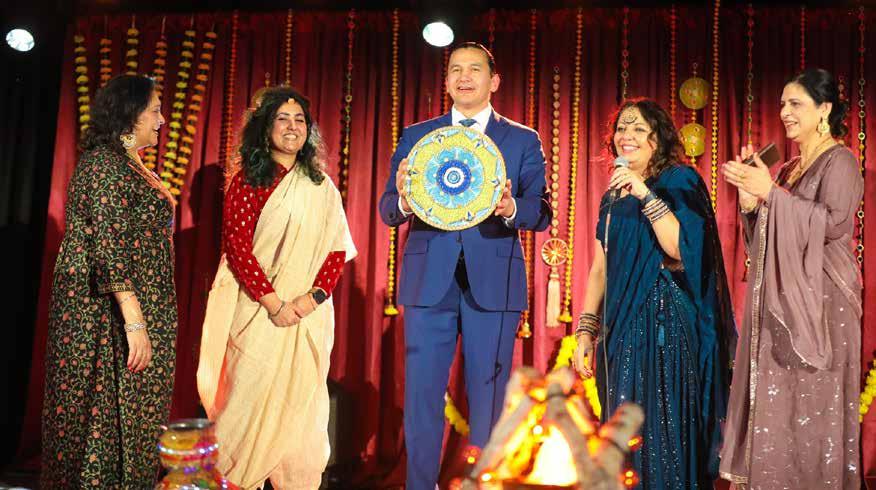
What kinds of community events or programs does AWOW host throughout the year, and how can people get involved or participate?
AWOW hosts a range of events, including the Lohri Mela in January, International Women’s Day celebration in March and networking meetups throughout the year especially in month of May to celebrate Asian Heritage. On top of that, every year we raise funds for women shelter or Siloam mission. People can get involved by attending events, volunteering, or becoming members.
Looking forward, what are some of the upcoming initiatives or goals for AWOW in the next 5-10 years? How do you see the organization growing?
Over the next decade, AWOW aims to become a cornerstone organization in Manitoba, known for driving systemic change and empowering thousands of women. AWOW plans to:
Expand its education and mentorship programs to support and uplift each other because when one woman rises, we all rise.
Bridge the gap between seniors & youngsters, decision makers and grass roots.
Create a safe space for our seniors where they can spend their retirement years in family environment and not feel isolated or trapped in the senior homes.
What
would you say to young Asian
women who are interested
in
getting
involved with AWOW or who want to help make a positive difference in their communities?
I strongly believe that it is our responsibility to build bridges for the next generation—to ensure that young women and girls see their potential, believe in their power, and know they are capable of achieving greatness. I want them to know that your voices, representation and contributions matter. You can join the organization anytime. AWOW offers a space where you can grow, lead and make an impact. Join our youth council, become a member. Together we can empower each other, dream bigger, aim higher and break every barrier in our way, celebrate our heritage and create a brighter future for generations to come.
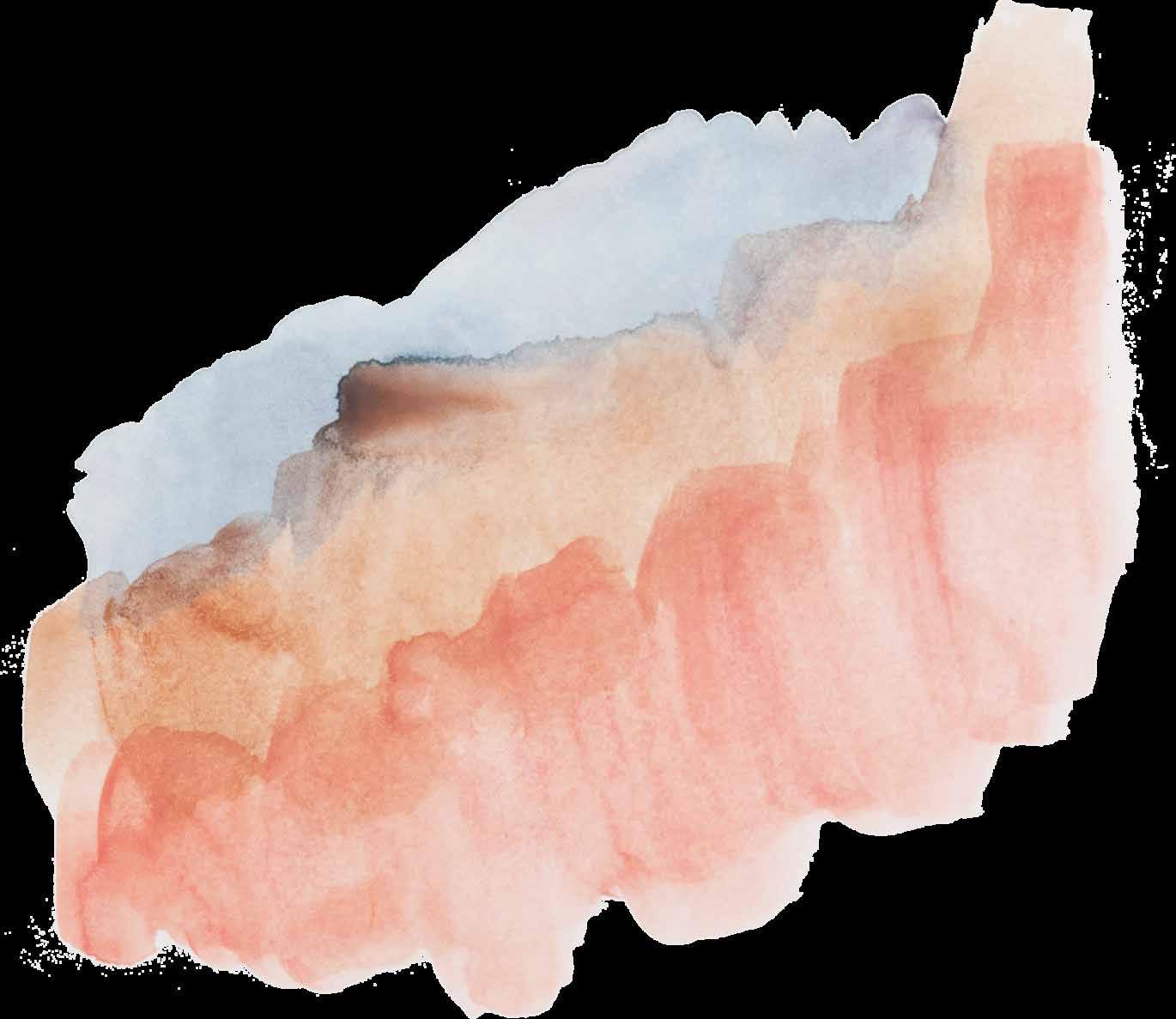


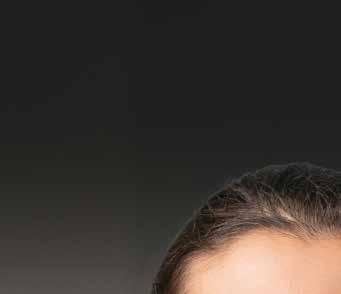






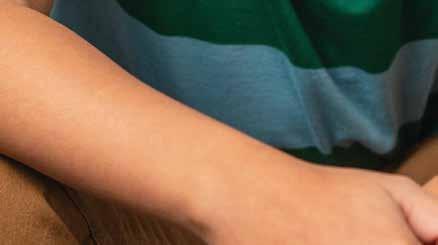






•


Seniors, infants, children and families are all relying on your generosity to make it through the day. Wages, rent and rising grocery prices are putting a daily strain on the lives of so many in our community.

Please consider a one-time donation, a legacy gift, volunteering or becoming a monthly donor.

The holiday season adds extra stress to society’s most vulnerable. Please donate today.
Watch this video and see the di erence your donation can make.






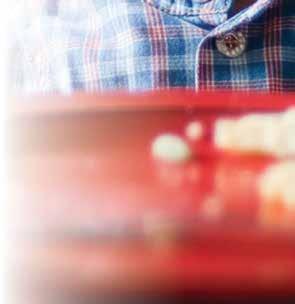





Founded in 2022, the Canadian South Asian Women’s Chamber of Commerce (CSAWCC) is a national non-profit organization dedicated to representing and promoting businesses owned and/or operated by South Asian women. Through a unified network of community and business sector leaders, the Chamber seeks to create a supportive network of like-minded business owners across Canada
The CSAWCC is a non-profit organization dedicated to supporting South Asian women entrepreneurs, and business leaders, in breaking the glass ceilings and provide the tools for their success.
It is our Mission together with you to:
Create a network of South Asian women business leaders, for the support, collaboration and assistance across communities;
Advocate for South Asian women business leaders at the federal, provincial, territorial and municipal governments, on issues relating to domestic business, government funding, foreign affairs and immigration, women and gender equality, and other applicable policy areas; Advocate for issues that are intersectional to South Asian women, or affect any partner organizations; Set out standards for businesses owned and/or operated by South Asian women, to foster a sense of collaboration and unification amongst various business areas; Promote small, medium and large businesses owned and/or operated by South Asian women across Canada to provide a space for the promotion of goods and services in the South Asian community
Geared for individuals and corporate members, we have memberships that suit everyone's needs.
What we offer*:
Networking opportunities with business owners and corporations
Access to CSAWCC events at a reduced cost
Monthly webinars
Voting rights (as an individual or business)
CSAWCC updates on activities in your area and on CSAWCC activities
Provide thought and opinion on how we can work to move South Asian women and women-owned businesses to the front of our communities and other policy advocacy work
A space to talk with other business and organizations owners to share ideas and thoughts from across the country
Monthly updates on opportunities from around the country
Membership direct services to help you grow your business
Member-to-member special offers and discounts and much more

Dr. Romie Dhaliwal Shaping Optometry and
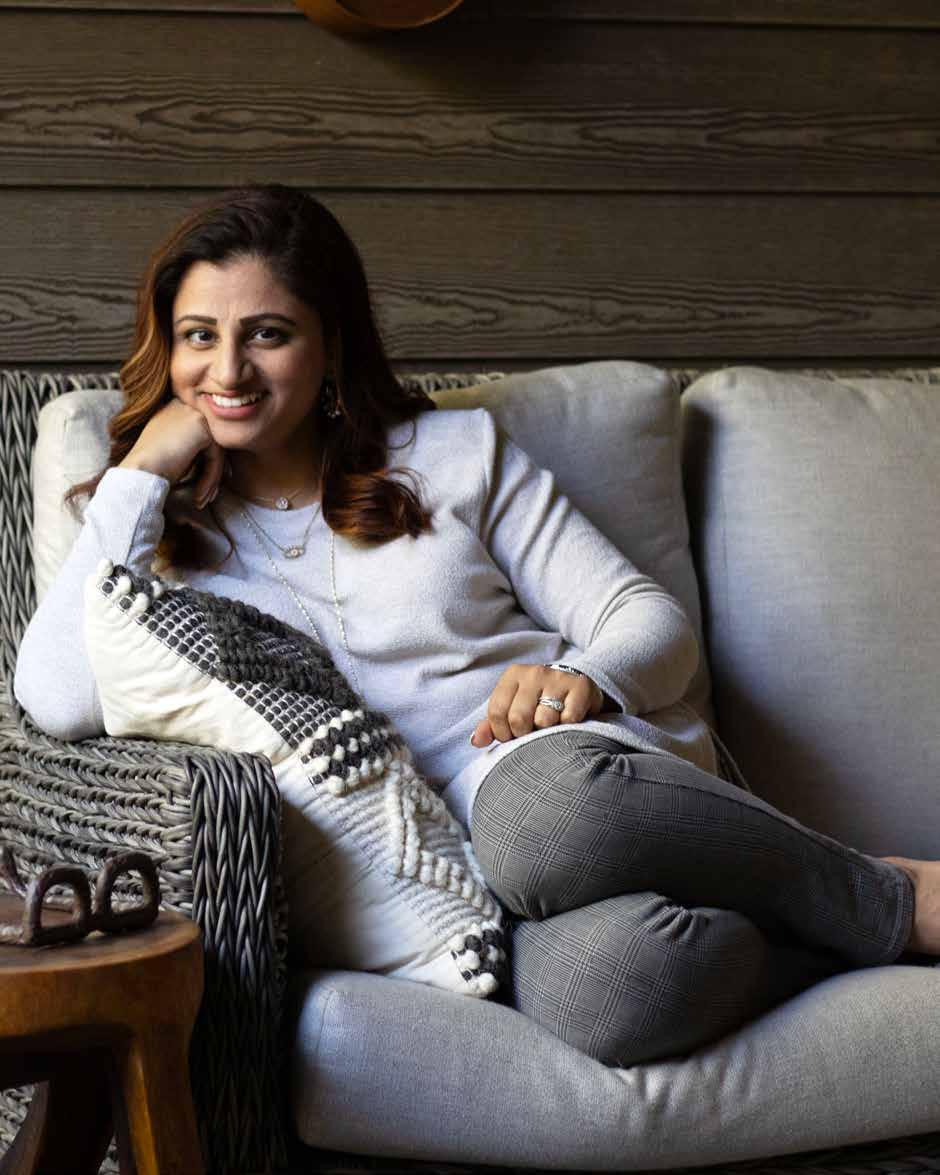
“I also want to bring more education about women’s eye health.” And reword it to “i also want to bring more education around women’s eye health.”
2 3
Tell us about your background and what inspired you to pursue Optometry.
Since I was a little girl, I have always loved the eyeball and was fascinated with its parts. My mom remembers me running around as a toddler chasing cats because their eyes always mesmerized me! My passion for optometry dates back to a grade 6 science fair project I found! A lot of patients always ask if I wear glasses or have a family history of any eye diseases that lead me to the profession of Optometry. I have always had 20/20 vision (I could use glasses for some uncorrected astigmatism I developed after having children) and never needed glasses. I also have no crazy stories of eye diseases that drove me toward the profession. I find the eye intriguing and love its connection to the rest of the body. Also, I find great joy in making people see their world more clearer! I shadowed an amazing Optometrist in high school, and once I graduated, she hired me. I have been fortunate to have worked alongside my mentor for almost 12 years. I also love educating and socializing with my patients, so Optometry was a natural fit for me!
Were you born and raised in Manitoba? Where did you do your schooling?
I was born and raised in Winnipeg. I did my BSc. at the University of Winnipeg and then applied to Optometry schools in the States. I picked the Illinois College of Optometry because I fell in love with Chicago and the midwest vibe of the city fit well with my Winnipeg roots.
How was your experience working as an Associate?
Why have you decided to open your own practice?
What will you be doing differently to cater to your patients?
I had a job waiting for me back home with my mentor. It was a comfortable transition from optometry school into the real world. I joined a group practice with two offices, one rural and one in the city. It allowed me to work alongside three different optometrists amongst various patients.
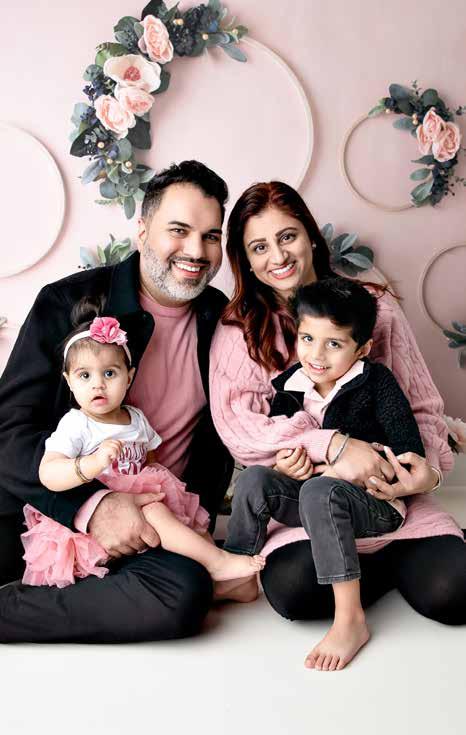
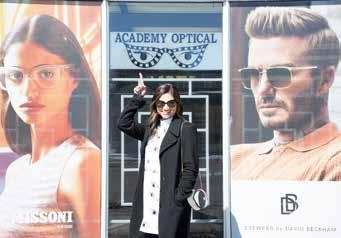

We did contact lenses and vision therapy, which excited me then and motivated me to complete the Practical Vision Therapy Accreditation Program with COVT&R.
I can't remember where I read it, but it was like: "The comfort zone is so dangerous. You have got to leave it if you want to grow. Growth comes from change. Live uncomfortably. You will be happier.” I needed to move on from the job I had been at for almost 12 years and do something that challenged me.
I admire private practice owners because they are deeply rooted in the community. They bring meaningful employment and help grow local businesses. Anyone who knows me knows what a big advocate I am about supporting local! I eat, drink, and wear local, so it was natural for me to create a space where I could do that for myself and my patients!
I have a 4-year-old son and daughter 1.5 years which inspired me to want to do more. I love being a mom, but I want my kids to grow up seeing me as a successful woman entrepreneur that they are proud of. A practice owner that makes their staff and patients feel valued and respected. That is what motivates me the most now, my kids.
My private practice is a full-service optometry clinic offering comprehensive eye exams and retinal imaging.
I have a special interest in treating chronic dry eye and myopia management. These two areas especially after the pandemic have been on the rise. Dry eye is one of the most common eye conditions and very underdiagnosed. I'm excited to provide new FDA-approved solutions.
4
As for myopia management, our office will provide various treatment options such as atropine eye drop therapy, specialty glasses, and the first and only 1-day contact lens approved by the FDA for slowing myopia progression in children. During the pandemic, I completed CooperVision's Brilliant Futures Myopia Management Program certification as I saw the need to help these kids.
We will have a contact lens-licensed optician to train parents and children on inserting and removing these contacts.
What are some common eye health issues South Asians deal with, and how does it affect their health? What can we do to help prevent these conditions?
A proper eye examination should feel like a physical for your eyes because the eyes are the windows to your health.
Eye exams can detect diseases and disorders like glaucoma, cataracts, retinal detachments and macular degeneration, and other health problems like diabetes, high blood pressure, high cholesterol and brain tumours. In my experience, two eye health issues have been prevalent in the South Asian community: diabetic retinopathy and cataracts. Diabetic retinopathy is caused by either Type 1 or Type 2 diabetes, where the blood vessels in the retina begin to leak and cause swelling in the back of the eye. Cataracts are a natural aging phenomenon that causes the eye's natural lens to get cloudy.
An article in the National Library of Medicine indicated that the prevalence of type 2 diabetes mellitus in South Asia is expected to increase by 150% between 2000 and 2035! That is an alarming and seriously concerning percentage to see. Our job is to provide early screening to help detect eye diseases like diabetic retinopathy and avoid blindness. My South Asian patients don't take diabetes seriously. They often will not indicate on their health history form that they have diabetes. On further investigation, they may indicate they are taking a pill to help control their sugar levels. They may not even associate or make the connection to being diabetic. It is important for us now more than ever to educate our community through open dialogue in the exam room about the importance of yearly dilated eye exams, staying physically active and making healthy food choices so we can reduce the ubiquity of this eye disease. I am proud that my Punjabi and Hindi are used frequently in the exam room to help patients understand their eye conditions.
A cataract is the most common cause of blindness and visual impairment globally.
It can normally make an appearance around the age of 60. In my years of practice, I have noticed that I'm sending my South Asian patients for cataract consultations in their early 40s. I attribute this early onset of cataracts to the increased UV damage and lack of proper sunglasses that the South Asian population is predisposed to from working in jobs that require a lot of driving. In particular, in recent years, truck driving, transit, taxi, and more popular SkipTheDishes and Amazon. I also live in Winnipeg, where we get 6 months of snowcovered landscapes, and snow reflects up to 85% UV radiation. When looking for sunglasses, ensure the labels say 100% UV protection against UVA and UVB.
Daily eye hygiene is so important to prevent conditions like blepharitis (eyelid inflammation), dry eye disease, and eye infections in general.
Blepharitis can be caused by seborrheic dermatitis (dandruff of the scalp and eyebrows), eyelash mites or lice, a blocked oil gland on the eyelid, rosacea, or allergies. Women are more prone to these eye conditions because of their makeup. If makeup is not removed properly, it can clog the oil glands and inhibit proper oil production. Makeup buildup in the meibomian glands can lead to problems like styes, eyelid skin problems, demodex mite infections, chronic pink eye, and eyelash growth problems.
I am proud that my Punjabi and Hindi are used frequently in the exam room to help patients understand their eye conditions.
Eyelash extensions are another popular trend and are one of the leading causes of blepharitis. The eyelids can become red, swollen, irritated and itchy from the glue used. Lash extensions can trap dirt and bacteria, holding them close to your eyes and leading to eye infections.
Proper and consistent lid hygiene is critical in preventing eye infections. Here are some tips to consider:
● Clean your eyelids every night with a foaming wash containing tea-tree oil or okra.
● Discard old eye makeup and mascara wands, sponges, and eyeliner every 3-6 months and clean your brushes regularly.
● Use hypochlorous (HOCL) acid to help improve your skin and eye health.HOCL comes in a spray bottle. Its anti-inflammatory and antimicrobial actions help fight skin bacteria, reduce flare-ups and soothe skin and eyes.
Education is key in helping prevent the early onset of cataracts, so I always encourage my patients to wear sunglasses at a young age.
The Canadian Association of Optometrists recommends that infants receive their first eye exam between the ages of 6 and 9 months and at least once between the ages of 2 and 5. Annual eye exams are recommended for school-age children. Healthy adults between 19-65 should visit the optometrist every two years. Adults with diabetes or other health conditions should have an exam at least once a year.
Most of my South Asian patients often ask me what foods they should eat to help improve their eyesight, and I remind them that no amount of vitamins will help to improve their eyesight.
Certain vitamins will help combat symptoms from diseases like dry eye or reduce the risk of age-related macular degeneration (AMD) and cataracts. Patients often leave my exam room with a grocery list and seem shocked at how vitamin deficiency directly affects our eye health. I encourage a diet rich in antioxidants and recommend vitamins A, B, C, D and E (easy to remember!) for maintaining good eye health. Vitamin A supports the formation of tears. Found in dairy products, liver, fish, and fortified cereals. Sources of provitamin A include carrots, broccoli, cantaloupe, and squash.
Vitamin B12 supplements improve symptoms of dry eye syndrome and can help reduce the burning associated with dry eyes. Animal sources include dairy products, eggs, fish, meat, and poultry.
Vitamin C may help reduce the progression of AMD and cataracts. Sources of Vitamin C include citrus fruits, berries, tomatoes, spinach and leafy greens. Vitamin D may help by reducing inflammation on the eye's surface. It can
be found in fatty fish like tuna, mackerel, and salmon. Foods fortified with vitamin D include dairy products, orange juice, soy milk, and cereals. Beef liver, cheese, and egg yolks.
Vitamin E may help reduce the risk of AMD and cataracts. Foods with vitamin E include peanut butter, sunflower seeds, almonds, and hazelnuts.
Omega 3 fatty acids reduce the tear evaporation rate and help reduce inflammation.
● This can alleviate symptoms like irritation and pain. Sources of omega-3 are fish and other seafood, nuts and seeds (such as flaxseed, chia seeds, and walnuts), and plant oils.
● My South Asian audience will love this one since it is used so regularly in our dishes but turmeric is a natural anti-inflammatory and can help with dry eye-related inflammation.
Yes! There is a growing concern about myopia (nearsightedness) in children after the pandemic. It has become a children's health concern.
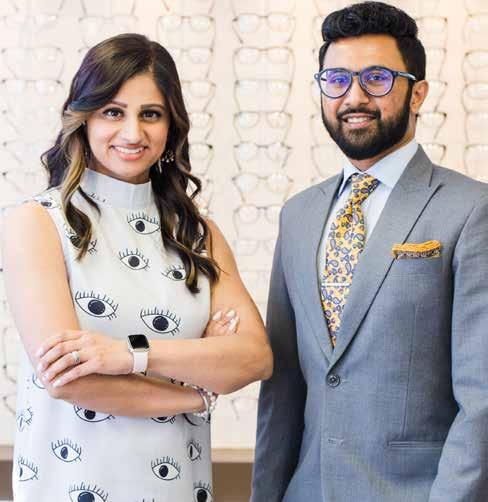

The increased screen time has not only put more kids in glasses and contacts but has started pediatric dry eye. One contributor to this epidemic is the increase in the time we spend indoors on phones and computers versus time outdoors, in natural light.
Myopia is now beginning in children as early as 6-7 years old, whereas historically, it was 12-13 years old. In a recent study examining Canadian school children, the rate of myopia was 6% in children aged 6-8 but jumped to almost 29% in children who were 11-13 years old.
In the past two years, I have noticed that I'm doing more myopia management. I have fit more young children with the 1-day daily contacts, which have been FDA-approved for ages 8-12 yo. Parents and children not comfortable handling contacts have been offered specialty glasses that are equally as effective. Still, not FDA-approved at this time.
We are encouraging kids to get outside at least 90 mins each day, limit screen time/near work, follow the 20-20-20 rule: every 20 mins, take a 20-second break and look at something 20 feet away, and encourage parents to bring their kids in yearly for their eye exams.
Early detection is key because we now have tools for preventing and treating certain eye conditions.
We live in a day and age of increased screen time usage amongst all age groups. Is a blue light filter
The American Academy of Ophthalmology does not recommend blue light-blocking glasses because of the lack of scientific evidence that blue light is damaging to the eyes.
Some recent studies suggested that blue lightblocking glasses do not improve symptoms of computer vision syndrome, also referred to as digital eye strain. The evidence shows that blue light significantly suppresses melatonin levels and that choosing to wear blue blockers in the evening may help people sleep better at night. For this reason, we recommend no screen time before bed.
watery eyes, blurred vision, headaches, and burning or itching eyes. We do not recommend blue light filters for these symptoms, but practicing good habits such as the 20-20-20 rule, using artificial tears, and watching your posture may help.
The sun is a natural source of blue light; the best filter against that is sunglasses with UV protection.
are
plans with your personal brand / business?
The hope is to connect and collaborate with colleagues and the great local businesses in the area.
We can elevate the profession and add value to our patient’s lives through collaboration! I have always been a big advocate of supporting small businesses as you support a dream and grow your local community!
I also want to bring more education around women’s eye health.
I will recommend and carry makeup lines and products that are more eye-care-forward. Beauty does not have to be toxic, and we can use eyesafe products that enhance natural beauty while still being able to promote and preserve eye health.
I’m a very outgoing, happy, and high-spirited human, so it brings me great joy to think I’m creating a safe space around me where my patients can feel comfortable talking about all their eye concerns. “Aspire to inspire” is truly what I believe. I want to attract more young professionals to this growing and exciting profession because this world needs more of us! 9
Digital eye strain can have symptoms of dry eye,
Social media is a powerful tool for bringing awareness and educating the public. Through my professional Instagram page, I have been able to connect with so many different people and colleagues all over the world. It was through social media that I recently got approached by a local business to do a talk about the importance of infant eye exams to a group of new moms. I plan to do more talks in the community as I get more grounded in my business.
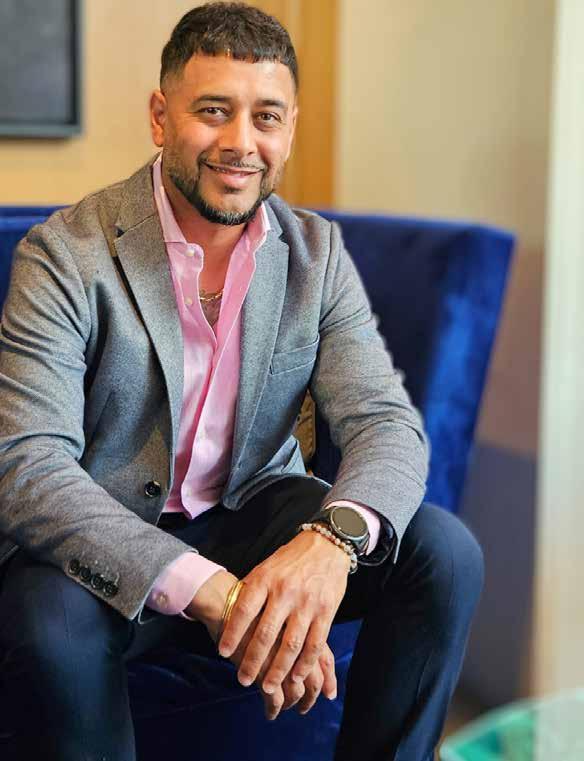
In the realm of integrative health and wellness, Dr. Satdip Binning stands not only as a practitioner but as a transformative force. With a journey marked by personal health crises and a relentless pursuit of answers, Dr. Binning has emerged as a beacon of vitality and resilience. As the founder of the Functional Health Institute, his mission is deeply rooted in his own transformative experience.
Driven by the desire to share his journey and the principles of Functional Medicine that catalyzed his own health restoration, Dr. Binning has become a sought-after authority in his field. His expertise has been recognized through invitations to contribute articles for magazines and participate in online summits and interviews, where he shares his unique application of the Functional Medicine
Certified as a Functional Medicine Practitioner, Chiropractor, and ART® Provider, Dr. Binning boasts an illustrious 17-year career dedicated to optimizing health and performance. His extensive experience has made him a trusted guide for everyday individuals and high-performance individuals such as entrepreneurs and professional athletes from esteemed organizations such as the NHL, NFL, US Olympic team, and CFL, among others.
At the heart of Dr. Binning’s approach lies a commitment to uncovering the root causes of chronic illnesses through personalized investigation. Instead of just treating symptoms, his mission is centered on uncovering and resolving the root cause. Guided by the belief that individuals possess the innate ability to
Dr. Binning has impacted thousands of lives by teaching people how to overcome the odds and create health where it matters most, in their homes. He guides his patients through lifestyle optimization, recognizing that true health is cultivated in everyday choices and habits. With a holistic approach that prioritizes empowerment and education, Dr. Binning is dedicated to enabling his patients to lead healthier, more vibrant, energetic, and more fulfilling lives.

The Functional Health Institute is one of the nation’s leading virtual clinics for achieving lasting health and wellness using science-based treatment methods of functional medicine. We believe in inspired living. That means living a life with meaning, purpose, and intention. A life free of disease because you realize that most disease is the consequence of lifestyle. A lifestyle that YOU have the POWER to CHANGE. It’s time for you to make yourself a priority and begin living a life with HEALTH and VITALITY. The Functional Health Institute is here to get you started. It’s time for you to begin living an inspired life.
WE SPECIALIZE IN:







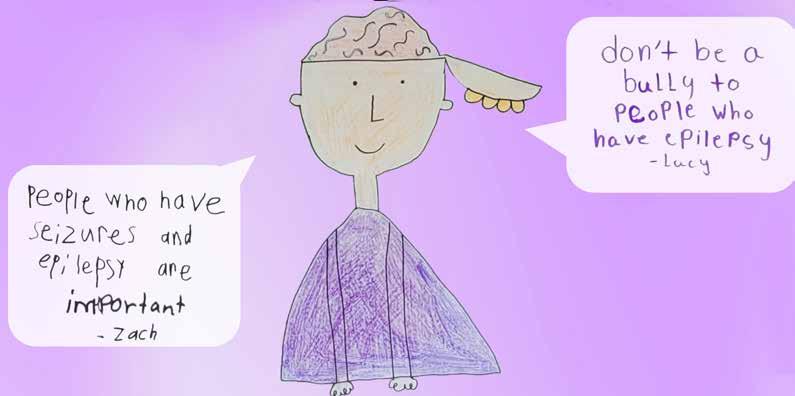



Hardeep Kaur Singh is not just a practitioner—she is a guide, a healer, and a deeply intuitive force in the lives of those she serves. With a profound understanding of the interconnectedness of mind, body, and soul, Hardeep offers a holistic approach to healing that is transformative on every level. Specializing in mental health, addiction recovery, and physical health challenges, she brings a unique blend of psychodynamic therapy, somatic healing, and intuitive energy work into her practice.
Offering both in-person sessions in Winnipeg, Manitoba, and online sessions, Hardeep works with clients across Canada. Whether you’re local or remote, she ensures that the opportunity for deep healing is within reach, with a strong connection that transcends geographic boundaries.
Her work is built on the foundation of spirituality, where she holds space with deep compassion and non-judgment, allowing her clients to feel safe in uncovering deep-seated traumas and emotional wounds stored in both the mind and body. With expertise in helping individuals release energetic blockages and resolve ancestral patterns, Hardeep helps people heal from the inside out, addressing root causes that often elude conventional treatment.
Her approach is deeply personal, meeting each individual where they are, recognizing that no two healing journeys are the same. Whether it’s through somatic practices, energy healing, or spiritual guidance, Hardeep’s clients are empowered to reconnect with themselves, heal, and step into their fullest potential. Through her work, she cultivates wholeness, healing, and a profound sense of well-being, offering a path to inner peace and transformation that is both grounded and spiritual.
Can you tell us about who you are as a practitioner and what drives your approach
As a practitioner, my work is deeply informed by my own healing journey and a strong foundation in spirituality. What drives me is the belief that true healing is a holistic process—one that integrates the mind, body, and soul. My passion lies in helping people uncover the emotional, mental, and spiritual layers of their struggles, guiding them toward deep transformation and self-empowerment.
I specialize in working with clients facing mental health challenges, addiction, and the physical manifestations of unresolved trauma. Many people don’t realize that chronic pain, tension, or other unexplained health issues often stem from suppressed emotions and past wounds. Healing becomes most effective when we address not just the mind, but also the body and soul. Through a combination of psychodynamic therapy, somatic practices, and energy healing, I help clients process and release stored pain—whether it resides in the subconscious mind or is held within the body. Somatic practices play a key role in this work, allowing clients to reconnect with their bodies, regulate their nervous systems, and process emotions that talk therapy alone may not reach.
My passion lies in helping people uncover the emotional, mental, and spiritual layers of their struggles, guiding them toward deep transformation and self-empowerment
As an intuitive energy psychologist and healer, I also help clients identify and clear energetic blockages that may be preventing them from moving forward. These blockages can manifest as trauma, emotional wounds, or even inherited patterns that continue to repeat. By integrating energy healing with therapeutic and somatic techniques, we create space for deep, multidimensional healing on mental, emotional, physical, and spiritual levels.
At the heart of my work is a deep commitment to meeting clients where they are. Whether they seek emotional healing, support for physical issues, or a deeper connection to themselves, my goal is to provide a compassionate and individualized approach. Everyone deserves to heal and feel whole, and transformation is possible—no matter where they are in their journey.
did your personal journey influence the business?
My journey to establishing Mind, Body & Soul Holistic Healing was deeply rooted in my own spiritual awakening. This profound experience not only transformed my perspective on life but also ignited a passion to help others on their paths to healing and self-discovery. I realized that true wellness extends beyond just the physical body; it encompasses the mind, body, and soul.
Growing up in the South Asian community, I witnessed firsthand the stigma surrounding mental health, trauma, and addiction. These struggles are often dismissed, minimized, or seen as weaknesses, forcing many individuals to suffer in silence rather than seek help. In many South Asian families, emotional expression is discouraged, generational wounds go unaddressed, and healing is often overlooked in favor of maintaining appearances. I saw how deeply this affected not just individuals but entire families, leading to cycles of unprocessed pain, suppressed emotions, and internalized shame.
My personal journey inspired me to bridge the gap by bringing holistic health and therapy into the community, creating a space where people can feel seen, heard, and supported without fear of judgment. My goal was to provide a culturally sensitive and trauma-informed approach, one that acknowledges the unique cultural expectations, family dynamics, and unspoken struggles that many South Asians face. By integrating holistic healing, I aim to help individuals not only break free from personal suffering but also reconnect with their ancestral wisdom and inner strength, fostering a sense of deep healing, selfempowerment, and transformation.
The name “Mind Body & Soul Holistic Healing” emerged from my own transformative healing journey. As I navigated my spiritual awakening, I discovered that true healing is a deeply integrative process that touches every aspect of our being. It’s not just about addressing physical symptoms or emotional pain in isolation but nurturing the mind, body, and soul in harmony.
Each element of the name reflects a crucial part of the healing process. The mind represents our thoughts, beliefs, and mental well-being, which often require gentle exploration and reframing. The body is where we store emotions and traumas, necessitating somatic work and physical release. The soul is the essence of who we are, calling for spiritual alignment and connection.
Through my own experiences, I realized how important it is to approach healing from a holistic perspective, especially in communities where mental health is often stigmatized. The name embodies my mission to offer a safe, nurturing space where clients can embark on their own journeys of healing and self-discovery, fully supported on all levels.
Holistic wellness found me during some of the most challenging moments in my life. As I navigated through my own healing journey, I was drawn to ancient roots and spiritual practices that felt both familiar and transformative. These practices, rooted in time-honored wisdom, offered more than just comfort—they facilitated profound shifts within me. I began to see changes not just within myself but in every aspect of my life, from my relationships to my sense of purpose and well-being.
The challenges I faced became pivotal turning points, guiding me to explore holistic wellness as a way to heal deeply and authentically. I connected with therapies that honored the interconnectedness of our being, where the physical, emotional, and spiritual are seen as one. This integrative approach allowed me to release old patterns, heal past wounds, and step into a more aligned and empowered version of myself.
In my daily life, I continue to embody holistic wellness by weaving in these ancient teachings and practices. Whether through meditation, mindful movement, energy work, or simply holding space for reflection, I stay connected to the rhythms of my inner world. This ongoing practice helps me maintain balance, remain present, and stay attuned to my highest self. It’s a journey of continuous growth, where wellness is not a destination but a way of living—an ongoing dialogue between the mind, body, and soul.
The core philosophy behind Mind Body Soul Holistic Healing is that true healing occurs when we address the entirety of a person. This holistic approach is rooted in the belief that every aspect of our being is interconnected, and genuine wellness can only be achieved when we nurture all these facets together. 3 4 5
In my practice, I emphasize the importance of understanding the deeper layers of one’s experiences and emotions. I believe that physical symptoms often have emotional or energetic roots, and by addressing these, we can facilitate profound healing. My philosophy is guided by compassion, presence, and the integration of ancient wisdom with modern therapeutic techniques.
This means that each client’s journey is unique, requiring personalized attention that honors their individual needs and life stories. I draw on a blend of therapeutic modalities—from energy work and sound therapy to mindfulness and somatic practices—ensuring a comprehensive approach that resonates on a deeper level.
Ultimately, my goal is to empower clients to reconnect with their inner wisdom, release what no longer serves them, and cultivate a balanced and fulfilling life. This philosophy shapes every aspect of my practice, guiding how I engage with clients, develop programs, and create a healing space that is both nurturing and transformative.
How do you blend ancient wisdom with western or modern therapeutic practices to create a distinctive healing experience at Mind, Body & Soul Holistic Healing?
At Mind Body Soul Holistic Healing, I merge ancient wisdom with modern therapeutic practices to offer a healing experience that addresses the whole person. The ancient teachings of transcendental meditation and breathwork form the foundation of my approach, offering clients time-tested methods to

In addition to these practices, I provide clients with modules and resources to continue their exploration and reflection outside of therapy. This ensures that the healing process extends beyond our sessions, allowing for deeper self-discovery and sustained personal growth. These modules help clients integrate what they learn into their daily lives, fostering a continuous
By combining these ancient techniques with structured guidance for ongoing reflection, I create a holistic framework that empowers clients to engage with their healing process actively. This blend of timeless practices and modern support tools allows clients to cultivate inner peace and resilience, making the healing experience both profound and enduring.
My goal is to empower clients to reconnect with their inner wisdom, release what no longer serves them, and cultivate a balanced and fulfilling life
How does your therapeutic approach facilitate lasting emotional healing and transformation for your clients?
My approach is designed to facilitate lasting emotional healing and transformation by delving into the root causes of emotional and psychological challenges. This involves guiding clients through profound inner work, including shadow work and inner child healing, which helps them confront and integrate the parts of themselves that have been suppressed or wounded.
Through shadow work, clients gain the courage to face the aspects of their psyche that they may have ignored, leading to breakthroughs in selfawareness and emotional resilience. Inner child healing allows clients to address and nurture past traumas, creating a sense of wholeness and self-compassion.
In addition to these, energy work and sound therapy provide a supportive foundation for emotional release and rebalancing. Energy work helps clear stagnant energy and restore harmony, while sound therapy uses frequencies to soothe the mind and body, fostering a state of deep relaxation and healing.
Together, these methods offer a holistic and comprehensive path to healing. Clients often report feeling more empowered, emotionally balanced, and connected to their true selves. This integrative approach not only helps to resolve current issues but also equips clients with the tools to maintain their well-being long after therapy has concluded.
In what ways do you tailor your services to cater the cultural and individual needs of your diverse clientele, particularly within the South Asian Community?
In my practice, I prioritize a culturally sensitive and holistic approach to ensure that my clients, particularly within the South Asian community,
feel understood and supported. I recognize that the South Asian culture often places a significant emphasis on family dynamics, community reputation, and the importance of balancing tradition with modern-day mental health needs. With this in mind, I work to create a safe and non-judgmental space where clients can freely express their concerns, knowing that their cultural values and backgrounds will be respected.
I integrate practices that resonate with the South Asian community, such as mindfulness, meditation, and even specific spiritual practices when appropriate, all while maintaining the integrity of evidence-based therapies. I am also mindful of the stigma that often surrounds mental health in some South Asian families, which is why I approach every session with empathy, confidentiality, and patience, allowing individuals to navigate their own healing journey at their own pace.
Furthermore, I offer flexibility in addressing both emotional and spiritual aspects of healing, recognizing the role that faith, rituals, and community support can play in a person’s well-being. Whether it’s through integrating Ayurvedic principles, spiritual practices such as mantra recitation or energy healing, or tailoring the healing process to accommodate unique cultural perspectives, I strive to help clients reconcile their traditional beliefs with their emotional and mental health needs.
Ultimately, my goal is to foster a space where South Asian clients can feel empowered, without the fear of judgment or misunderstanding, and where their cultural and individual needs are embraced and honored as part of their healing journey.
What
challenges have you faced in building your holistic business, and how have you overcome them?
Building a holistic business has come with its unique set of challenges, but each has been an opportunity for growth and learning. One of the biggest hurdles has been helping people understand the value of integrating mind, body, and soul in healing. Many individuals are accustomed to traditional, symptom-focused approaches and may not immediately grasp the benefits of a more holistic approach.
To overcome this, I focus on educating my clients about the interconnectedness of mental, emotional, physical, and spiritual health, showing them how each aspect impacts the other. I also make sure to share real-life success stories and results from my practice to help them see the transformative potential of a holistic approach.
Another challenge has been navigating the stigma surrounding mental health, particularly within certain cultural communities. In the South Asian community, for example, there is often a hesitancy to seek help due to fear of judgment or a lack of understanding around mental health. To address this, I have made it a priority to create a culturally sensitive environment where people feel heard, seen, and respected. I’ve worked to incorporate spiritual and cultural elements into my practice, offering mindfulness, meditation, and Ayurvedic-based practices, which can often make clients more comfortable in opening up about their struggles.
Through these challenges, I’ve been able to refine my practice and stay committed to offering a healing space where people can address the root causes of their pain, rather than just the symptoms. The key has
been staying true to my mission, remaining adaptable, and ensuring that I continue to learn and evolve as a practitioner
A further challenge has been balancing the diverse needs of my clients while maintaining my own selfcare and boundaries. In a holistic practice, it’s easy to get caught up in the emotional energy of others, especially when supporting people through difficult healing journeys. I’ve learned the importance of setting clear boundaries and practicing self-care to ensure I can show up fully for my clients without burning out. Additionally, continuing to educate myself, whether through workshops, courses, or networking with other holistic practitioners, has helped me stay grounded and grow both personally and professionally.
Through these challenges, I’ve been able to refine my practice and stay committed to offering a healing space where people can address the root causes of their pain, rather than just the symptoms. The key has been staying true to my mission, remaining adaptable, and ensuring that I continue to learn and evolve as a practitioner.
One of the most memorable success stories that stands out to me is of a client who came in with chronic physical health issues that no doctor could diagnose. They had seen numerous specialists, undergone countless tests, and yet no one could pinpoint the cause of their pain. Alongside their physical struggles, they were also battling a deep addiction that had been affecting their relationships, work life, and overall well-being.
Through our sessions, we explored the emotional and mental layers that were contributing to both their addiction and physical symptoms. We uncovered how unresolved trauma from their past was manifesting not just emotionally but physically in their body. Together, we focused on integrating mental health tools, somatic therapies, and spiritual practices to help them reconnect with their body and heal at a deeper level.
Over time, they noticed a significant reduction in their physical symptoms, which was something they hadn’t experienced before.
Their addiction, which had felt like an insurmountable barrier, also started to loosen its grip, as they were able to process and release the underlying emotional pain that had kept them stuck. They began to regain a sense of control over their life, and the physical healing they experienced reflected the inner work they were doing.
This transformation was deeply rewarding, not just for the client but for me as a practitioner, as it reinforced the power of a holistic approach. It was a reminder that when we address the root causes— whether they’re emotional, mental, or spiritual—we can unlock true healing on all levels, beyond just the physical symptoms.
How do you view the role of holistic wellness in today’s fast-paced world, and why do you think it’s gaining popularity?
In today’s fast-paced, always-on world, holistic wellness plays a crucial role in helping individuals reconnect with themselves and prioritize their overall well-being. As we navigate the pressures of modern life, with its constant demands on our time, energy, and attention, many people are beginning to realize that physical health alone isn’t enough to maintain balance. True wellness encompasses not just the body, but the mind, emotions, and spirit. It’s about aligning all aspects of our being to find harmony and healing.
Holistic wellness is gaining popularity because people are increasingly seeking a more integrated approach to health that goes beyond quick fixes and symptom management. Many are realizing that mental health, emotional well-being, and spiritual alignment are just as essential as physical health. The traditional healthcare system, while crucial, often doesn’t address the root causes of issues—whether they’re emotional, mental, or spiritual. This gap is where holistic wellness comes in, offering a more comprehensive solution that fosters long-term healing and personal growth. 11
Truewellnessencompasses not just the body,but the mind, emotions,andspirit.It’sabout aligningallaspectsofourbeingto findharmonyandhealing.
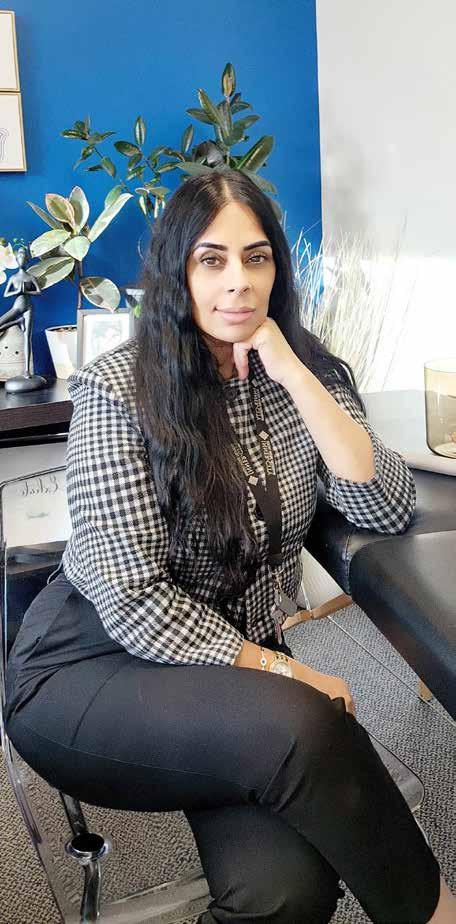
What I hope people take away from working with me or learning about holistic wellness is a deeper sense of self-awareness, empowerment, and compassion for themselves. When it comes to mental health and addictions, I want people to know that they don’t have to suffer in silence. You are never alone in this journey
Another reason for the growing interest is the rise in stress-related illnesses, chronic conditions, and burnout. As people seek ways to cope with these challenges, holistic practices such as mindfulness, meditation, energy healing, and somatic therapies provide effective tools for not just managing but healing on a deeper level. There’s also an increasing recognition of the mind-body connection, where emotional and mental states can directly impact physical health, leading individuals to look for ways to heal at all levels.
People are also becoming more aware of the importance of self-care and the need to reclaim their sense of balance. With the constant noise and distractions of modern life, many are turning to holistic wellness as a way to slow down, listen to their bodies, and reconnect with their inner selves. Whether through yoga, meditation, energy work, or nutrition, these practices help individuals regain a sense of control and purpose in a world that often feels overwhelming.
In my work, I see the power of holistic wellness not only in restoring health but in creating lasting transformation. By helping clients integrate all aspects of their being—physical, emotional, and spiritual— they are able to achieve a sense of balance and alignment that supports them in all areas of their lives. This shift towards holistic healing reflects a broader cultural movement toward self-awareness, mindfulness, and personal empowerment, and it’s exciting to be part of this journey with my clients.
What do
What I hope people take away from working with me or learning about holistic wellness is a deeper sense of self-awareness, empowerment, and compassion for themselves. When it comes to mental health and addictions, I want people to know that they don’t have to suffer in silence. You are never alone in this journey. We all face struggles, and we didn’t come to Earth with a manual. Healing is not linear, and there is no one “right” way to navigate it. It’s about showing yourself grace and kindness as you work through the challenges life throws at you.
Holistic wellness is about integrating all aspects of ourselves—our physical, emotional, and spiritual health. I want people to understand that healing, whether it’s from trauma, addiction, or mental health challenges, requires patience and compassion. It’s a journey of discovery, where you learn to reconnect with yourself and recognize the strength you already possess.
I also hope that those who come to me feel empowered to take control of their healing. Life’s struggles are not meant to define us, but to teach us. My goal is for everyone to leave feeling more connected to their own resilience, knowing that they are not alone in their experiences. Together, we are all navigating this journey, and there is always room for grace and healing along the way.
Ultimately, I hope people walk away with a renewed sense of peace and purpose, feeling empowered to face life with more self-love, confidence, and the understanding that healing is always possible.
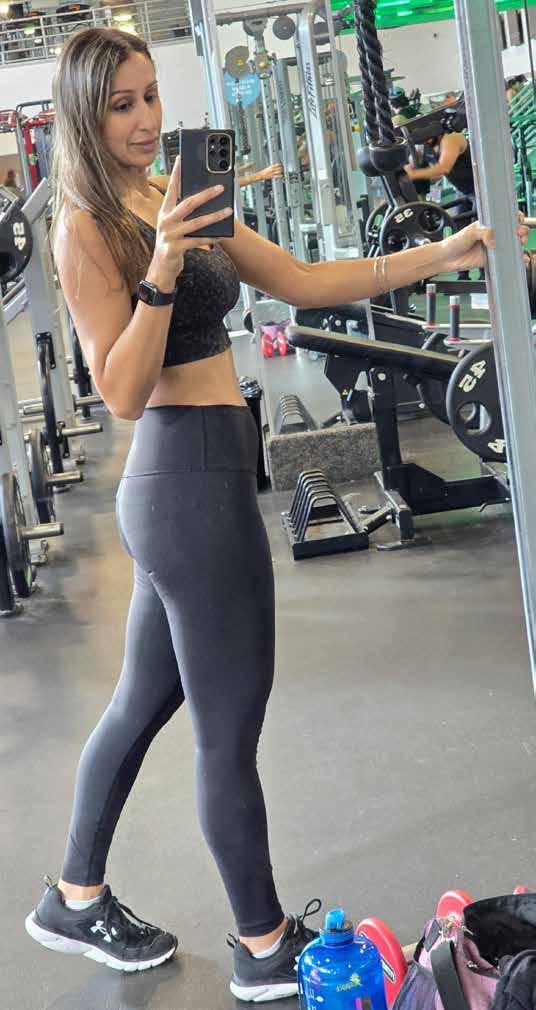








Hi, I’m Sonia, the proud owner of FitKitchen and a full-time professional. A few things about me: I love food, I love cooking, and my happy place is the gym. Like many, I initially started working out to lose weight, but what really hooked me was the process itself. That passion led me to become a certified personal trainer (CPT) and nutrition coach, all while balancing a fulltime career.
I'm passionate about helping others find that same balance. My mission is to promote body positivity in a healthy, sustainable way. Weight loss doesn’t have to be complicated or make you feel like you’re missing out on life’s pleasures. It’s about finding a harmonious balance of self-love, self-care, and enjoying everything life has to offer—within healthy boundaries.
At FitKitchen, I believe there are no "bad" foods. Everything can and should be enjoyed in moderation. I offer personalized 1-on-1 coaching, both online and in-person, to help you with nutrition and getting active, so you can live a healthier, happier life.
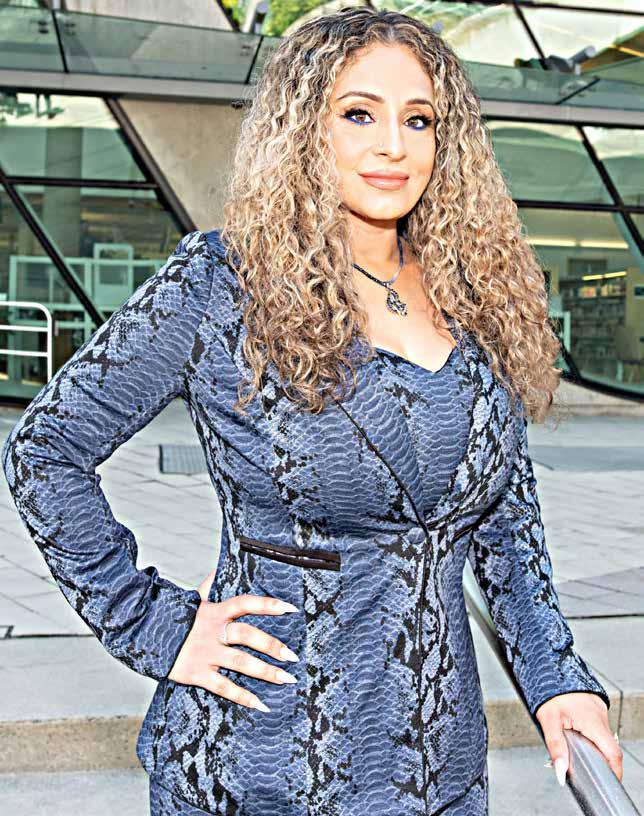


Full-Service Boutique Agency Specializing in Multicultural Marketing Previous Clientele: Major Banks, Telecoms, Corporates, Small Businesses, Non-Profits & Community Organizations
Event Production & Magazine Publications Across Canada
Track Record for Securing Corporate Sponsorships & Funding

